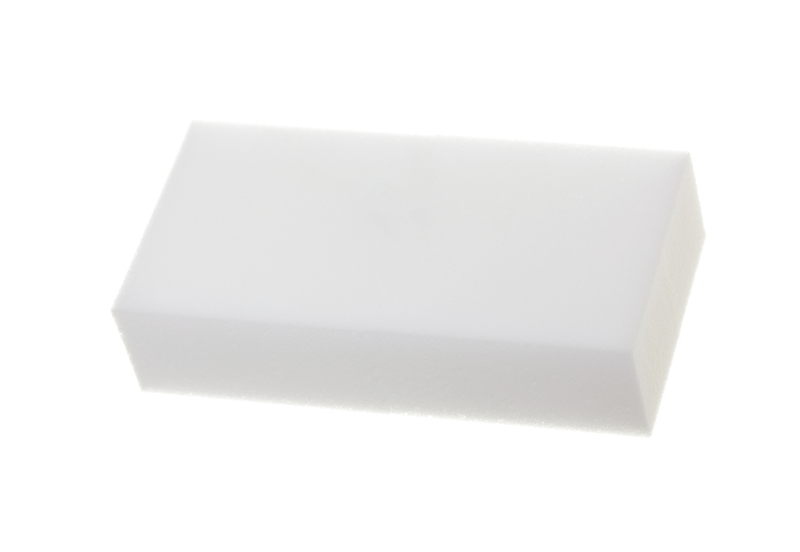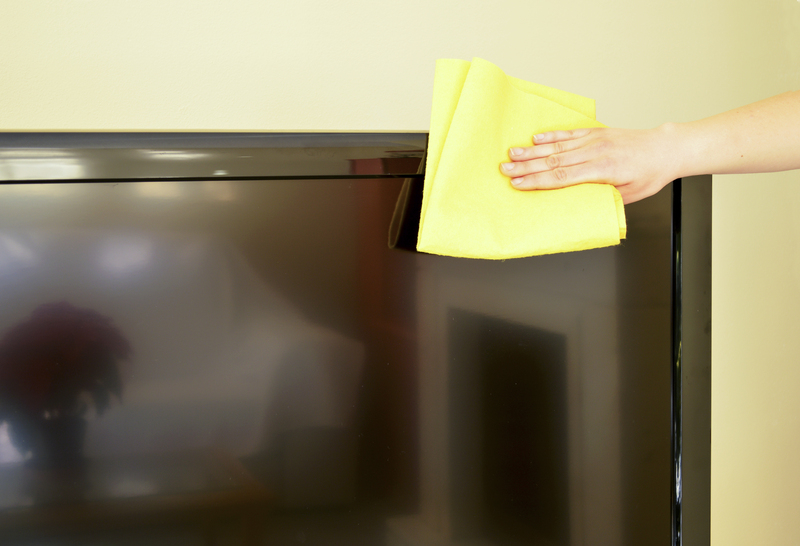The Art and Science of Carpet and Hard Floor Maintenance
Posted on 29/09/2025
The Art and Science of Carpet and Hard Floor Maintenance
Maintaining pristine floors is both an art and a science. Whether you own luxurious carpets or modern hard floor surfaces, understanding the nuances of cleaning and preservation is critical. This comprehensive guide delves deep into the art and science of carpet and hard floor maintenance, providing expert tips, innovative strategies, and essential routines to ensure your floors remain spotless and long-lasting.
Why Floor Maintenance Matters
Your floors are among the most heavily trafficked surfaces in your home or business. Proper carpet and hard floor care not only enhances aesthetic appeal but also safeguards indoor air quality, extends flooring lifespan, and preserves warranty coverage. Neglecting this essential aspect can lead to premature wear, costly repairs, and even health concerns.
- Carpet maintenance prevents allergic reactions and respiratory issues by reducing dust and allergens.
- Hard floor care protects against scratches, stains, and structural damage.
- Regular cleaning boosts the overall value and appearance of your property.

Understanding Carpet and Hard Floor Types
Carpet Varieties
Carpeting comes in various fibers and constructions. The most common carpet fiber types include:
- Nylon: Durable, resilient, and great for high-traffic areas.
- Polyester: Stain-resistant and budget-friendly.
- Wool: Luxuriously soft, naturally stain-resistant, and eco-friendly.
- Olefin (Polypropylene): Moisture and mildew resistant, ideal for basements.
Each fiber type calls for specific maintenance techniques to keep it looking fresh.
Hard Flooring Types
Hard flooring encompasses a range of materials, each requiring distinct care:
- Hardwood: Elegant but sensitive to moisture and scratches.
- Laminate: Looks like wood; resistant to scratches but vulnerable to water.
- Vinyl: Versatile, water-resistant, and easy to clean.
- Tile: Durable, moisture-proof, requires grout cleaning.
- Stone: Luxurious, porous, and needs sealing.
The Science Behind Carpet and Hard Floor Cleaning
- Soil Removal: The central goal of floor cleaning is eliminating soil--dirt, dust, and particulates that damage fibers and substrates.
- Chemical Interactions: Cleaners rely on chemistry to break down and lift soils, stains, and oils from fibers and finishes.
- Physical Action: Agitation (scrubbing, vacuuming, mopping) physically detaches and removes dirt.
- Drying: Proper drying prevents mold, mildew, and further damage.
Combining the right chemistry, technique, and equipment forms the backbone of effective carpet and floor maintenance.
Best Practices for Carpet Maintenance
Daily and Weekly Carpet Cleaning
Vacuuming remains the single most important routine for carpet longevity. Aim for high-filtration vacuum cleaners with HEPA filters, especially in households with pets or allergies. For high-traffic zones, daily vacuuming is recommended.
- Use slow, overlapping strokes to capture deep-seated dirt.
- Pay extra attention to entryways and corridors where soil accumulates the most.
- Don't forget edges and corners where dust tends to settle.
Spot Cleaning Tips
Immediate action prevents spills from turning into permanent stains. Carpet care experts recommend:
- Blot (do not rub) spills using a clean, white towel.
- Use appropriate carpet cleaning solutions--test in an inconspicuous area first.
- Rinse with clean water and blot until dry.
- For stubborn stains, consider professional carpet stain removers.
Deep Cleaning and Professional Maintenance
Over time, regular vacuuming alone cannot remove embedded dirt and allergens. Professional carpet cleaning every 12-18 months rejuvenates fibers and maintains warranty conditions.
The most effective methods are:
- Hot Water Extraction (Steam Cleaning): Utilizes heated water and powerful suction to remove contaminants deep within fibers.
- Encapsulation: Cleans with low moisture, ideal for commercial carpets, capturing dirt in polymer crystals for easy vacuuming.
- Dry Cleaning: Using minimal moisture, this is suitable for delicate fibers like wool.
Essential Hard Floor Maintenance Techniques
Daily and Routine Cleaning Approaches
Hard floor maintenance is simplified with the right daily steps:
- Sweep or dust-mop floors daily to remove grit and debris.
- Damp-mop with a pH-neutral cleaner suitable for your floor type (e.g., wood, tile, or vinyl).
- Quickly wipe up spills to prevent staining, warping, or slipping hazards.
Protecting Different Types of Hard Floors
- Hardwood: Avoid excess water; use microfiber mops and wood-safe solutions.
- Laminate: Never soak; use damp (not wet) cloths and refrain from steam mops.
- Vinyl: Easy to clean; avoid abrasive pads or harsh chemicals.
- Tile & Stone: Clean grout regularly; reseal stone floors to prevent staining.
Periodic Professional Hard Floor Services
- Buffing/Polishing: Revives shine and erases micro-abrasions on wood and stone.
- Deep Scrubbing: Removes embedded soils, grime, and build-up, particularly beneficial for tile and concrete.
- Sealing/Recoating: Protects against moisture and stains; essential for natural stone and wood floors.
Innovative Technologies in Modern Floor Maintenance
The advent of new cleaning technologies is transforming both carpet and hard floor maintenance.
- Robotic Vacuums & Mops: Automated solutions for daily cleaning, perfect for busy households or commercial spaces.
- Green Cleaning Products: Eco-friendly, safer for people, pets, and the environment.
- HEPA Filtration: Advanced filters trap microscopic debris and allergens, optimizing both air and floor cleanliness.
- UV Sanitizers: Some devices use UV light to kill bacteria and viruses on floors for a truly hygienic clean.
Common Mistakes to Avoid in Floor Cleaning
- Over-Wetting Carpets: Promotes mold growth and fiber damage.
- Using Wrong Chemicals: Can strip finishes or set stains permanently.
- Skipping Routine Maintenance: Leads to soil build-up and shortens flooring lifespan.
- Neglecting Professional Services: Occasional deep cleaning is essential for both carpets and hard surfaces.
Eco-Friendly Strategies for Sustainable Floor Care
Sustainability is now at the heart of modern carpet and hard floor care. You can maintain your floors without harming the planet by:
- Choosing biodegradable cleaning solutions and low-impact chemicals.
- Opting for washable, reusable mop heads and cleaning pads.
- Employing water-saving cleaning methods (such as low-moisture carpet cleaning).
- Properly recycling or responsibly disposing of old carpet and flooring materials.
Integrating these eco-friendly options helps you maintain beautiful floors while reducing your environmental footprint.
Expert Tips for Floor Longevity and Beauty
- Use entrance mats at all doors to trap dirt and moisture before it gets to your floors.
- Rearrange furniture occasionally to prevent uneven wear on both carpet and hard surfaces.
- Employ protective pads under furniture legs to prevent scratches and indentation.
- Keep pet nails trimmed to guard against gouges and snags.
Frequently Asked Questions about Carpet and Hard Floor Maintenance
How often should I clean my carpets and hard floors?
Carpets should be vacuumed at least once a week (more frequently in high-traffic areas), with deep cleaning every 12-18 months. Hard floors should be swept or mopped daily and deep-cleaned at least quarterly or as needed.
Is DIY cleaning as effective as professional services?
While regular DIY maintenance is critical, professionals use advanced equipment and solutions for a much deeper clean. Combining both ensures optimal results and extends floor life.
What products should I avoid on my floors?
Avoid bleach, highly acidic or alkaline cleaners on both carpet and many types of hard floors. For hardwood, stick to wood-safe cleaners--never use ammonia or steam.
What is the best way to handle pet stains?
Blot immediately, use an enzymatic cleaner designed for pet stains, and rinse the area thoroughly. For lingering odors or stains, professional treatment is recommended.

The Future of Carpet and Hard Floor Maintenance
The art and science of carpet and hard floor maintenance is constantly evolving. Innovations in cleaning technology, eco-friendly products, and smarter maintenance routines are creating cleaner, healthier, and longer-lasting flooring surfaces for homes and businesses alike. As flooring materials advance and new cleaning techniques emerge, staying informed is more important than ever.
Conclusion: Master the Art of Floor Care
Mastering the art and science of carpet and hard floor maintenance is a rewarding endeavor. With careful attention, regular upkeep, and the right technology, your floors can remain beautiful, durable, and healthy for years to come.
For the best results, combine daily routines with periodic professional services, tailor your methods to your specific flooring types, and stay open to emerging trends in floor care. When you approach carpet cleaning and hard floor maintenance as both an art and a science, the rewards go far beyond just appearances--they impact your entire living environment.



